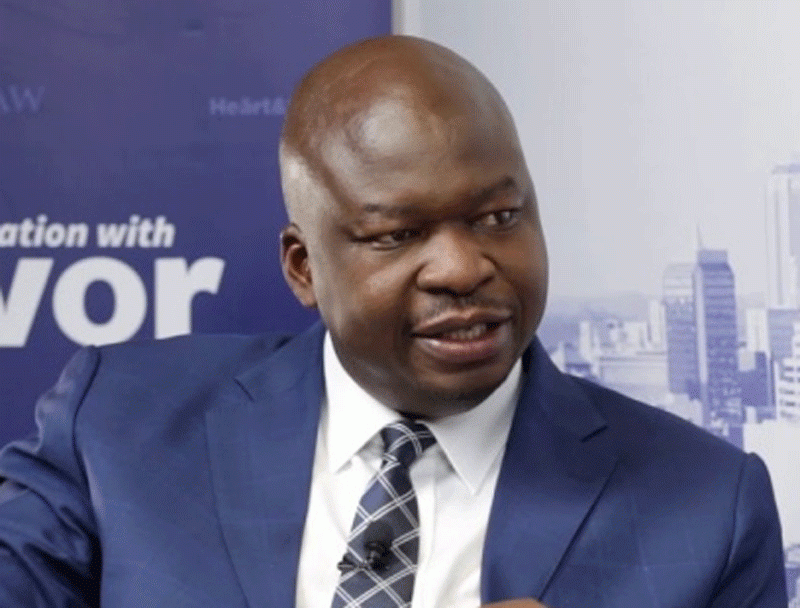
GOVERNMENT has engaged a consultancy firm to develop a Disaster Risk Finance (DRF) strategy as it seeks to offer finance to mitigate against natural disasters, an official has revealed.
In December 2022, government in partnership with the African Development Bank (AfDB), the World Bank, the Centre for Disaster Protection (CDP) and the African Risk Capacity, under the Africa Disaster Risk Financing Programme (ADRiFi) organised training for ministries, departments and agencies.
This also included the private sector in the development of DRF space and was held in Bulawayo last year in December, 2023.
The training, and knowledge exchange workshop focused on key aspects of DRF, including fundamentals of DRF, key components of effective DRF strategies, financial instruments, and disbursement mechanisms, among other topics.
Last Friday, another workshop was held to diagnose the DRF financing strategy in which the Finance and Economic Development permanent secretary George Guvamatanga said they had now engaged a consultancy firm to develop the DRF strategy.
“The validation workshop on the diagnosis report of the DRF strategy comes at an opportune time when we have just finalised engaging the consulting firm to develop the DRF strategy,” he said.
“The Government of Zimbabwe is geared to develop the DRF strategy, and the implementation plan, under the joint leadership of the Ministry of Finance and Economic Development (including financial sector regulators the Insurance and Pensions Commission and Reserve Bank of Zimbabwe) and the (Department of) Civil Protection in close consultation with relevant line ministries, through joint support from the AfDB through its ADRiFi programme, the World Bank and the Centre for Disaster Protection.”
To improve the country’s preparedness for natural disasters, Zimbabwe and the AfDB signed a protocol agreement on capacity building for the ADRiFi on February 24, 2020.
- ‘Killer’ soldier granted bail
- Letter from America: The death of the Zimbabwe dollar shows the King has no clothes
- Letter from America: The death of the Zimbabwe dollar shows the King has no clothes
- Assets requirement headache for insurers
Keep Reading
The purpose of the ADRiFi in Zimbabwe is to better manage climate disaster risks, which will, in turn, increase the country’s resilience and ability to respond to climate shocks.
This is being accomplished with the help of premium financing and extensive capacity building.
“Nearly everyday there is potential or serious damage and loss of life due to storms, floods, droughts or other natural hazards in Zimbabwe, which have detrimental effects to the vulnerable populace, women and children are the most affected. Colleagues, we meet against the backdrop of insistent climate-related disasters across the world,” Guvamatanga said.
“These events have unprecedented impacts on human lives and livelihoods. Tropical Cyclone Idai that ravaged Chimanimani and surrounding areas in 2019 demonstrated that when multiple hazards interact, they have a widespread devastation.
“Our public assets including roads, schools, hospitals, office buildings and telecommunication infrastructure are not sparred during the disasters.”
He said Zimbabwe had a history of recurring droughts, cyclones and floods, some with severe impacts on both lives and livelihoods, and with the deepening of climate crisis, severity and geographic extent of the hazards are expected to grow.
“The key role of DRF in climate change and disasters clearly require us to deepen our understanding of the disasters, instruments available, and other country experiences to effectively predict and mitigate natural disasters,” Guvamatanga said.
“The government acknowledges, and appreciates World Bank, Centre for Disaster Protection and AfDB’s continued support that has allowed us to be here, and providing the platform for representatives from different organisations to impart valuable knowledge and informatics.”
Government has received a sizeable payout from the African Risk Capacity drought risk pool in the first year of participation, the 2019/20 crop season, and continues to participate in that pool.
To better plan, prepare, and respond to extreme weather events and disasters, and to strengthen approaches towards financing of recurrent disasters, especially drought disasters, which continue to bedevil our nation, government decided to invest in drought insurance policies.






